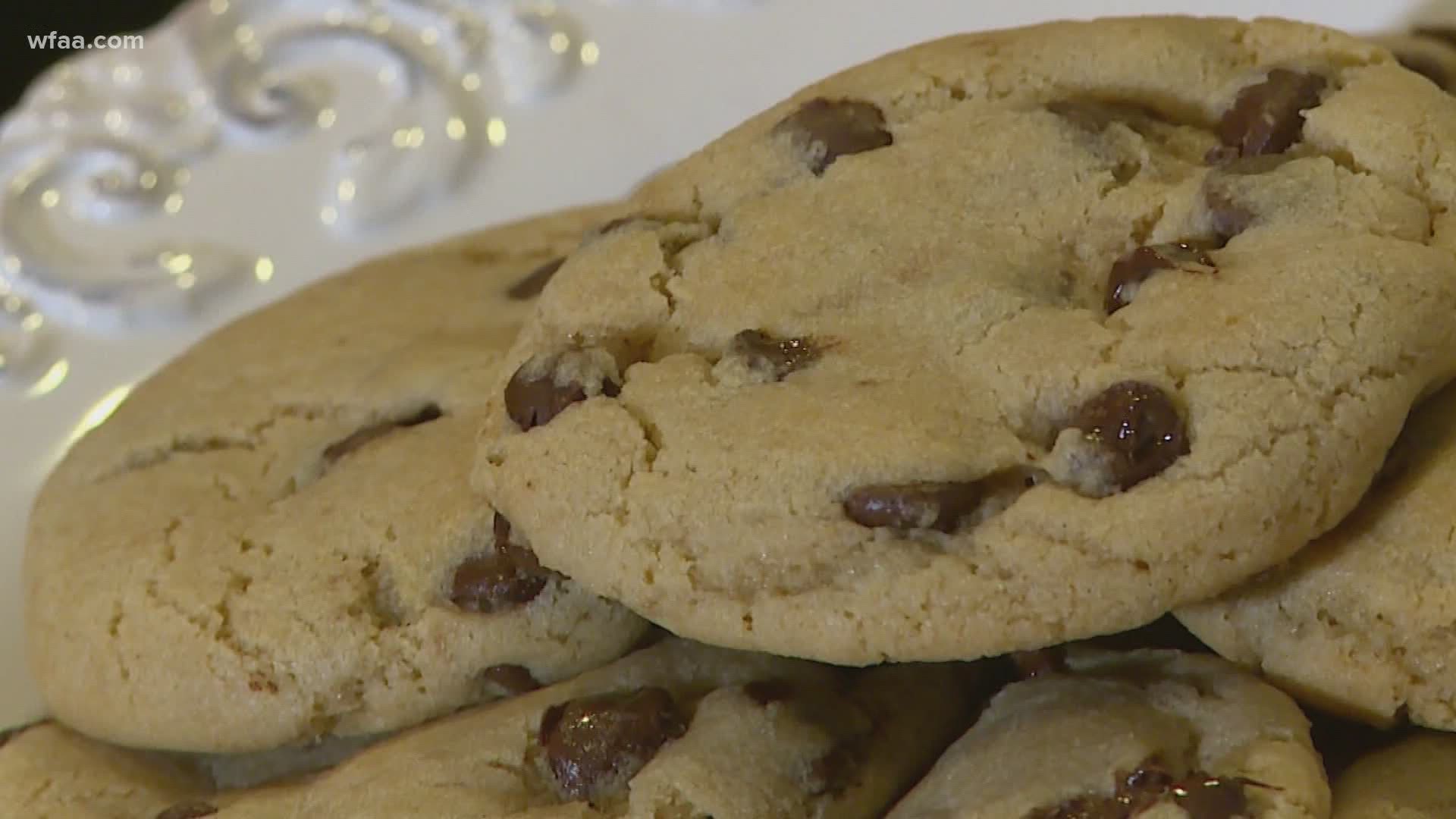Chocolate chip cookies are one of the most beloved desserts in the world. They’re so deliciously simple, yet, scientifically, a single cookie is incredibly complex.
Most of the science behind a chocolate chip cookie happens inside the oven. The oven is like a tiny laboratory where a bunch of chemical reactions are happening to make a chocolate chip cookie ooey gooey and irresistible.
Temperature is what causes most of these scientific reactions. If the oven is set to 375 degrees then the cookie dough will eventually heat up to 375 degrees. Along the way, a lot of things are happening to turn the dough into a cookie.
It starts with butter.
Butter is made mostly of two things: water and fat. When the cookie dough reaches 92 degrees, the butter starts to melt and all the water trapped inside the butter turns into steam. Since the butter is melting, the cookie dough starts to look like it’s melting too and starts transforming from a round ball to a flatter cookie-like shape.
By putting eggs in cookies it helps prevent the dough from spreading completely flat like a piece of paper.
Eggs are full of protein. When individual proteins are exposed to high heat (144 degrees) they link together to create a strong bond, which helps hold the cookie together.
As the dough gets hotter and hotter, science becomes more active.
Once the cookie dough reaches 212 degrees all the steam that’s still trapped inside boils away leaving behind tiny pockets of air.
Air is essential to the chocolate chip cookies we know and love. It makes the cookies softer and fluffier. However, the air pockets left behind from the water aren’t enough to do the job.
Baking soda is usually added to cookies to give them more air. Anyone who has ever put baking soda in vinegar knows that it causes a bunch of air bubbles to form. The same thing happens when baking soda is exposed to heat. The reaction from baking soda and heat creates more air pockets, which makes an even softer cookie.
The most important science behind a chocolate chip cookie happens at 310 degrees. The Maillard Reaction takes place when sugar combines with amino acids, which come from protein.
Once the sugar and amino acids get together, they form new chemical compounds that produce amazing tastes, smells and textures. The Maillard Reaction is what makes bread smell delicious, gives coffee a nutty flavor and turns meat brown and flavorful.
The brown color and a lot of the delicious taste of cookies wouldn’t be possible without the Maillard Reaction.
One final scientific reaction takes place at 356 degrees. That’s when carmelization happens. When sugar gets hot it starts turning into caramel. There won’t be caramel oozing throughout your cookie, but you might taste some similarly sweet flavors.
It only takes about 10 minutes for all of that science to happen.
Knowing how each ingredient inside a cookie works allows you to tweak a recipe, add or subtract things and make a cookie exactly the way you like it.
So, go ahead, try it out and enjoy!
Chocolate chip cookie recipe
Ingredients
1 cup butter
1 cup brown sugar
1 cup white sugar
1 tsp salt
1 tsp baking soda
2 tsp vanilla
2 eggs
3 cups flour
2 cups chocolate chips
Steps:
Preheat oven to 375 degrees F. Line a baking pan with parchment paper and set aside.
In a separate bowl mix flour, baking soda, salt, baking powder. Set aside.
Cream together butter and sugar until combined.
Beat in eggs and vanilla until fluffy.
Mix in the dry ingredients until combined.
Add chocolate chips and mix well.
Roll 2-3 tablespoons (depending on how large you like your cookies) of dough at a time into balls or use a small cookie scoop, and evenly spaced them on your prepared cookie sheets.
Bake in preheated oven for approximately 8-10 minutes. Take them out when they are just BARELY starting to turn brown.
Let them sit on the baking pan for 2 minutes before transferring to a cooling rack.

